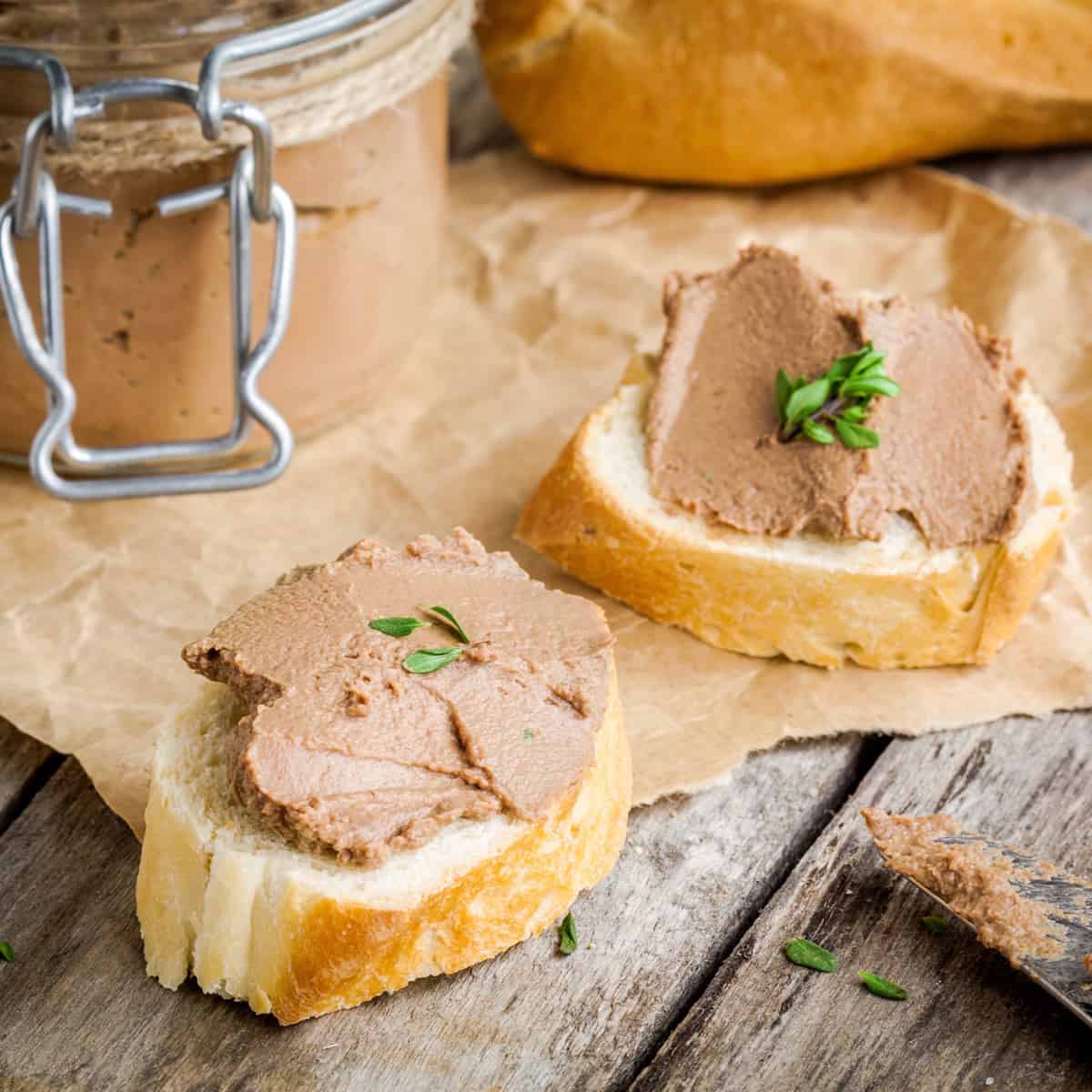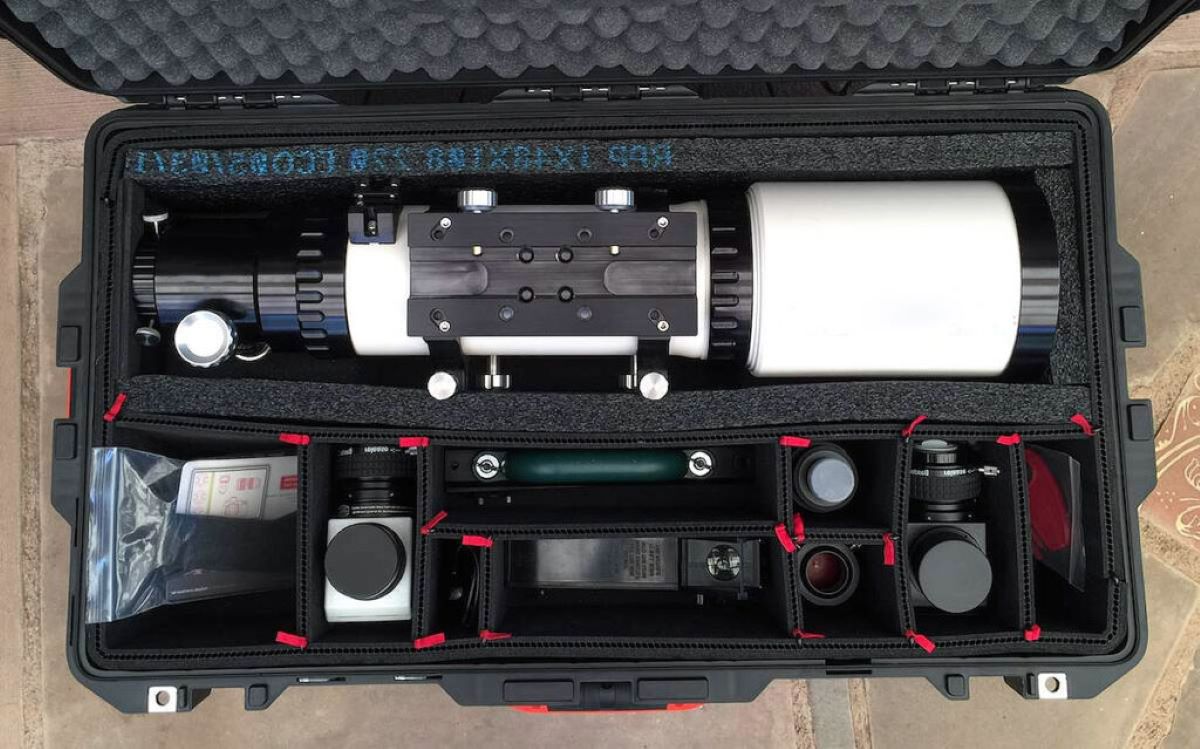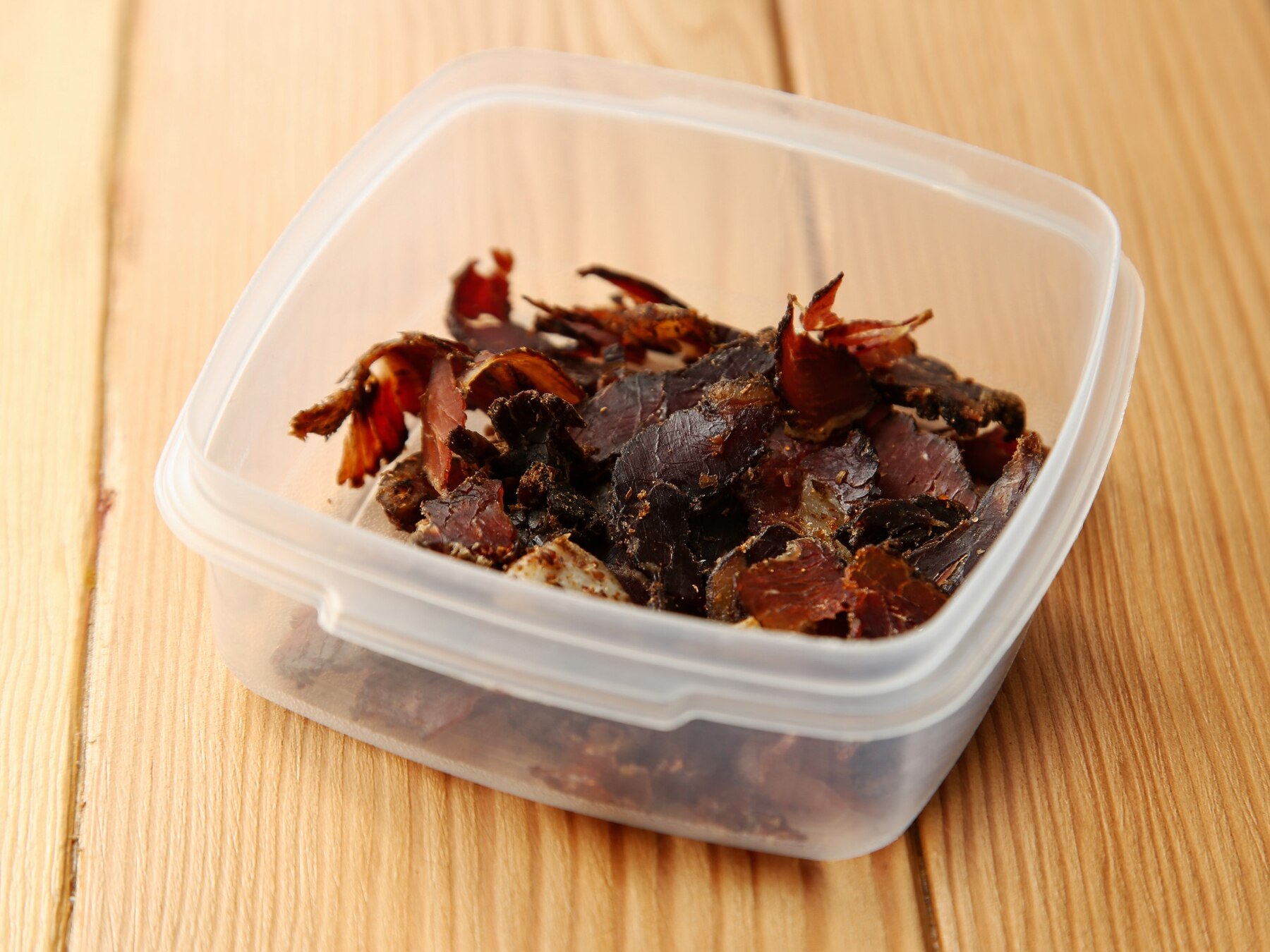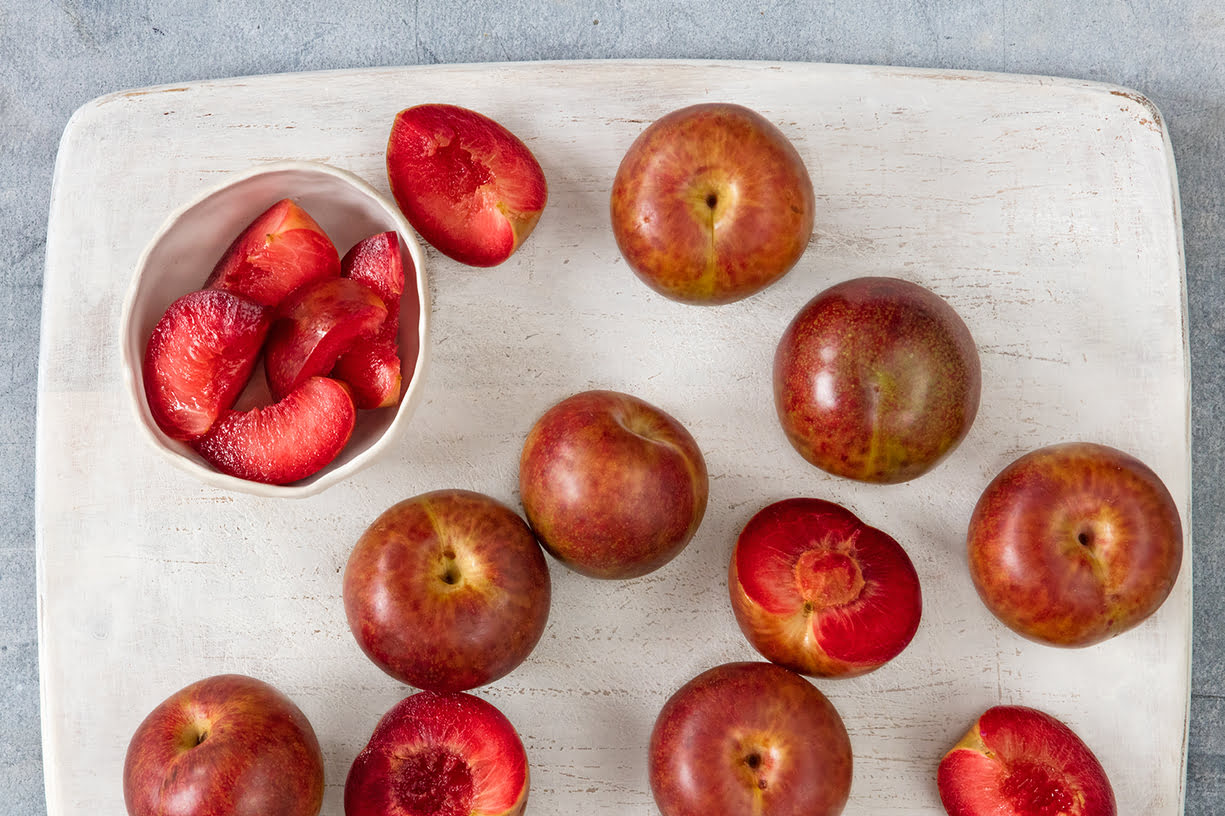

Articles
How To Store Pate
Modified: December 7, 2023
Learn the best way to store pate in our step-by-step guide. Discover useful tips and tricks to keep your pate fresh and flavorful.
(Many of the links in this article redirect to a specific reviewed product. Your purchase of these products through affiliate links helps to generate commission for Storables.com, at no extra cost. Learn more)
Introduction
Welcome to the article on how to store pate, a delicious and versatile spread that can elevate any meal or appetizer. Whether you have made a homemade pate or bought it from a store, proper storage is essential to maintain its flavor and texture.
Pate, a French delicacy made from finely ground meat, liver, or vegetables, is often seasoned and cooked to perfection. It comes in various flavors and types, including chicken liver pate, duck liver pate, and vegetarian pate. Its rich and creamy texture makes it a popular choice for spreading on crackers, toasts, and sandwiches.
To ensure that your pate remains fresh and delicious for as long as possible, it’s important to understand the best storage practices. In this article, we will guide you through the process of choosing the right container, preparing pate for storage, storing it in the refrigerator, freezing it for long-term storage, and safely thawing frozen pate.
So, whether you’re a pate enthusiast or a curious beginner, let’s dive into the world of storing pate and ensure that you can enjoy its delightful flavors whenever you desire.
Key Takeaways:
- Elevate your pate game by choosing the right container, preparing it for storage, and utilizing the refrigerator or freezer to maintain its delectable flavors and textures.
- Safely thaw frozen pate using refrigerator, water bath, or microwave methods, and follow key storage tips to ensure your pate stays fresh, flavorful, and ready to enjoy.
Read more: How To Store Store-Bought Bread
Understanding Pate
Before we delve into the intricacies of storing pate, let’s take a moment to understand this delectable delicacy. Pate is a classic French dish that has gained popularity worldwide for its rich flavors and smooth texture. It is typically made by grinding or pureeing meat, liver, or vegetables and combining them with a mixture of spices, herbs, and sometimes even alcohol.
Pate often incorporates various ingredients such as poultry, game meat, pork, or even seafood, resulting in a wide range of flavors and textures. While some pates are cooked before being enjoyed, others are served as a terrine, which is a loaf-shaped pate prepared through baking or steaming.
What sets pate apart is its luxurious and smooth consistency, achieved through the addition of cream, butter, or eggs. This not only enhances the flavor but also contributes to its spreadable nature, making it an excellent choice for hors d’oeuvres, charcuterie boards, and sandwiches.
It’s important to note that pate containing meat or liver should be handled and stored with care due to its perishable nature. Proper storage techniques will help maintain its quality and prevent the growth of harmful bacteria.
Now that we have a better understanding of what pate is, let’s move on to the key steps involved in properly storing this delectable spread.
Choosing the Right Container
When it comes to storing pate, selecting the right container is crucial for maintaining its freshness and preventing any contamination. Here are some factors to consider when choosing a container:
- Material: Opt for a container made of glass or food-grade plastic. These materials are non-reactive and provide a safe environment for storing pate without altering its taste or quality.
- Airtight Seal: Look for containers with airtight lids or covers. This will help create a barrier against air and moisture, which can lead to spoilage and affect the texture and flavor of the pate.
- Size: Choose a container that is appropriately sized to accommodate the amount of pate you plan to store. It’s best to avoid leaving too much empty space, as excess air can promote the growth of bacteria.
- Stackable: If you have limited storage space, consider opting for stackable containers. These will help save space and keep your fridge or freezer organized.
It’s worth noting that if you’re using a terrine dish for pate, ensure that it has a secure lid or cover to maintain freshness. If the terrine dish does not come with a lid, carefully transfer the pate to an airtight container.
Remember to thoroughly clean and sanitize the container before use to prevent any cross-contamination. Wash it with hot, soapy water and rinse it well, or run it through a dishwasher cycle if it is dishwasher safe.
By carefully selecting the right container, you can protect your pate and extend its shelf life significantly.
Preparing Pate for Storage
Properly preparing pate for storage is a crucial step in ensuring its longevity and maintaining its quality. Here are some important considerations when preparing pate for storage:
- Wrap or Cover: If your pate came pre-packaged, it may already be in a suitable container or wrapping. However, if you have made homemade pate or transferred it to a different container, make sure to tightly wrap or cover it to prevent air exposure. You can use plastic wrap, aluminum foil, or a lid with an airtight seal.
- Labeling: It’s helpful to label the container with the date of preparation and the type of pate to easily keep track of its freshness. This is especially important if you are storing different types of pate in the same area.
- Remove Excess Fat: If there is a layer of fat on top of the pate, consider removing it before storing. While some fat can contribute to the flavor and texture, an excessive amount can promote spoilage. Scrape off the excess fat gently using a knife or spoon.
- Divide Into Portions: If you have a large quantity of pate, it’s beneficial to divide it into smaller portions before storage. Separate the pate into serving sizes that you can easily consume in one sitting. This way, you can thaw only what you need and avoid repeatedly exposing the entire batch to air and moisture.
By properly preparing pate for storage, you can safeguard its taste and freshness, making sure it remains delicious for longer periods.
Storing Pate in the Refrigerator
The refrigerator is the ideal place to store pate if you plan to consume it within a few days. Proper storage in the refrigerator will help maintain the pate’s quality and prevent any potential bacterial growth. Here’s how to store pate in the refrigerator:
- Ensure that the pate is tightly wrapped or covered to prevent air exposure and moisture buildup.
- Place the wrapped or covered pate in the coldest part of the refrigerator, usually on a shelf towards the back.
- Avoid storing the pate near strong-smelling foods, as it can absorb their flavors.
- Regularly check the pate for any signs of spoilage, such as an off smell, unusual texture, or mold growth. If any of these signs are present, discard the pate immediately.
- Consume the pate within 3-5 days for optimal freshness. Remember that pate contains perishable ingredients, so it’s best to enjoy it while it’s still at its peak.
Keep in mind that pate’s texture may become firmer when chilled, so you may want to remove it from the refrigerator a few minutes before serving to allow it to soften slightly.
When storing opened store-bought pate, refer to the packaging instructions for specific storage recommendations. Some manufacturers may provide guidelines based on the pate’s ingredients and preservation methods.
By following these guidelines, you can safely store pate in the refrigerator and enjoy it over several days without compromising its quality or taste.
Store pate in an airtight container in the refrigerator. It should be consumed within a few days for the best flavor and quality.
Read more: How To Store Basil From Grocery Store
Freezing Pate
Freezing pate is an excellent option if you want to extend its shelf life beyond a few days. Freezing can help preserve the pate’s freshness and flavor for several months. Here’s how to freeze pate:
- Ensure that the pate is tightly wrapped or packaged in an airtight container specifically designed for freezer storage. This will prevent freezer burn and maintain the pate’s quality.
- If you have divided the pate into smaller portions, place each portion in separate freezer-safe containers or wrap them individually with plastic wrap or aluminum foil.
- Label each container with the date of freezing to keep track of its freshness.
- Place the wrapped or containerized pate in the freezer, preferably in the coldest area. Keep it away from strong-smelling foods that could affect its flavor.
- Try to use the frozen pate within 3-4 months for the best quality and taste. While it can be safe to eat beyond this timeframe, the texture and flavor may start to deteriorate.
When freezing pate, it’s essential to note that the texture may change slightly upon thawing. The fat content in the pate can separate, resulting in a grainier texture. However, this does not typically affect the overall taste and can easily be blended back together upon reheating or serving.
It’s also worth mentioning that freezing is not suitable for pate that has been previously frozen and thawed. Repeated freezing and thawing can degrade the texture and quality of the pate.
By following these freezing guidelines, you can enjoy pate at your convenience, even months after its original preparation.
Thawing Frozen Pate
Thawing frozen pate properly is crucial to ensure its texture and flavor remain intact. Here are a few methods for safely thawing frozen pate:
- Refrigerator Thawing: The safest method to thaw frozen pate is to transfer it from the freezer to the refrigerator. Place the wrapped or containerized pate in the refrigerator and allow it to thaw slowly over 24 to 48 hours. This gradual thawing process helps maintain the pate’s texture and prevents the growth of harmful bacteria.
- Water Bath Thawing: If you’re short on time, you can opt for the water bath method. Ensure the frozen pate is tightly wrapped or placed in a sealed container to prevent water absorption. Fill a large bowl or sink with cold water and submerge the pate in its packaging. Change the water every 30 minutes to maintain its cold temperature. Thawing time may vary depending on the size of the pate, but it typically takes 1 to 3 hours.
- Microwave Thawing: If you’re in a hurry, you can thaw small portions of frozen pate in the microwave using the defrost setting, following the microwave manufacturer’s instructions. Be cautious not to overheat or cook the pate during the thawing process, as this can affect its texture.
Regardless of the thawing method you choose, it’s important to consume the pate as soon as it has completely thawed. Avoid refreezing previously thawed pate, as this can lead to a loss of flavor and quality.
Once the pate is thawed, you can serve it at room temperature or slightly chilled, depending on your preferences. Remember to check the texture and smell for any signs of spoilage before consuming.
By knowing and applying the proper thawing methods, you can enjoy the frozen pate as if it were freshly made.
Tips for Proper Pate Storage
To ensure your pate stays fresh and maintains its quality, here are some additional tips for proper pate storage:
- Keep it Cool: Pate is highly perishable and should be stored at a temperature below 40°F (4°C). This prevents the growth of harmful bacteria and helps preserve its taste and texture. Make sure your refrigerator is set to the correct temperature and monitor it regularly.
- Avoid Temperature Fluctuations: Rapid temperature changes can affect the pate’s quality. Avoid placing it near temperature-sensitive areas such as the door or the back of the fridge where temperature fluctuations are more likely to occur. Additionally, refrain from leaving the pate at room temperature for an extended period.
- Practice FIFO Method: FIFO stands for “first in, first out.” When storing multiple batches or containers of pate, use the oldest ones first to ensure freshness. This prevents any pate from sitting in storage for a prolonged period, reducing the risk of spoilage.
- Keep it Clean: Always use clean utensils and hands when handling pate to avoid cross-contamination. Bacteria can transfer easily, so practicing good hygiene is essential to maintain the pate’s safety and longevity.
- Avoid Aria Exposure: Oxygen can impact the quality and lifespan of pate. Ensure the pate is wrapped tightly or stored in an airtight container to minimize air exposure. This will help prevent oxidation and maintain the pate’s taste and color.
- Consider Portion Control: If you frequently consume smaller portions of pate, consider storing it in individual serving sizes. This way, you can thaw and enjoy only what you need, reducing the risk of excessive air exposure and potential waste.
By following these tips, you can maximize the shelf life of your pate and enjoy it at its best quality.
Conclusion
Properly storing pate is essential for preserving its flavors, maintaining its texture, and ensuring its safety for consumption. Whether you have made homemade pate or purchased it from a store, following the right storage techniques will help you enjoy this delectable spread for longer periods.
By choosing the right container, such as glass or food-grade plastic, with an airtight seal, you can create an optimal storage environment for pate. Tightly wrapping or covering the pate before storage, labeling containers, and removing excess fat are crucial steps in preparing the pate for storage.
If you plan to consume the pate within a few days, storing it in the refrigerator is the best option. Ensure it is tightly wrapped and placed in the coldest part of the fridge. However, if you want to extend its shelf life, freezing the pate is a suitable choice. In that case, use airtight containers or wrap the pate individually to prevent freezer burn.
Thawing frozen pate safely is important to maintain its texture and taste. The recommended methods are refrigerator thawing, water bath thawing, or microwave thawing, depending on your time constraints and preferences.
Lastly, to ensure optimal pate storage, keep it cool, avoid temperature fluctuations, practice FIFO method, maintain cleanliness, minimize air exposure, and consider portion control.
By following these tips and guidelines, you can store pate properly, ensuring its longevity and preserving its exquisite flavors. So go ahead, enjoy this delectable spread whenever you desire, knowing that it’s stored just right.
Frequently Asked Questions about How To Store Pate
Was this page helpful?
At Storables.com, we guarantee accurate and reliable information. Our content, validated by Expert Board Contributors, is crafted following stringent Editorial Policies. We're committed to providing you with well-researched, expert-backed insights for all your informational needs.















0 thoughts on “How To Store Pate”